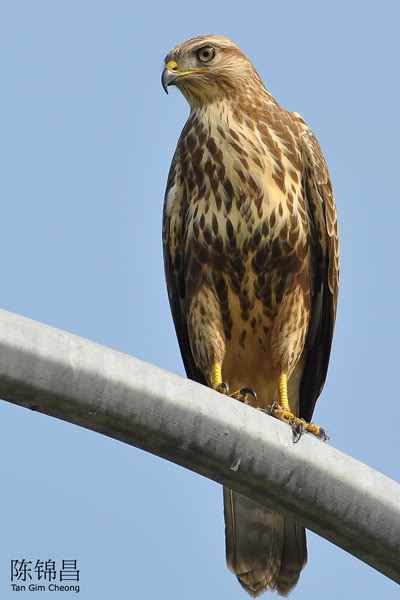Contributed by Connie Khoo.
The Grey Heron, Ardea cinerea, is a common waterbird around the disused mining ponds and wetlands in Perak. Large breeding colonies of up to fifty pairs can be found on trees at these wetlands all over the state.
An online search shows that they feed mainly on fish and live aquatic animals like reptiles, amphibians, molluscs, crustaceans and insects. As a carnivore, they are one of the top predator among waterbirds. They are often see stalking or standing still at freshwater ponds, lakes, rivers, marshlands and sea coast foraging for food.
There were records of them taking juvenile ducks, rails, small birds and mammals.

But it still came as a surprise to us when my friend Wan Tian Seng, a new birder photographed a Grey Heron with a dead Blue-eared Kingfisher, Alcedo meninting, in its beak at a fresh water pond at the KINTA NATURE PARK at Batu Gajah, Perak, on 11 August 2020. The Blue-eared Kingfisher is a resident forest kingfisher commonly seen around the wetlands here.
He first saw the Grey Heron probing and digging under the water and later coming out with the kingfisher. How the kingfisher got in the water was a mystery. If it is a juvenile it may have fallen in during its first flight as they have been known to be breeding here. But this looks like an adult bird. Could it be that the Grey Heron was nearby watching the kingfisher diving for fish or leaving its nest and waited for this successful strike? He did not get to see the Grey Heron swallowing the kingfisher.

The Grey Heron was seen flicking the Blue-eared Kingfisher by its neck. From the photo, the kingfisher appeared limped and dead. It neck must have been broken or it had suffocated.
Nature can be cruel from our perspective. The sight of a small colourful kingfisher being killed looks gruesome. But in the animal world it is always the survival of the fittest and strongest. Records like these just help us to understand our ecosystem and bird ecology better.














